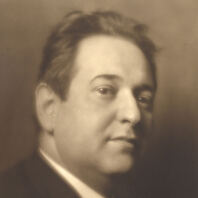Erich Wolfgang Korngold
composer
Erich Wolfgang Korngold’s brilliant career came to an abrupt end with Nazi Germany’s annexation of Austria: the composer was driven into exile in Hollywood, where he soon enjoyed great success as the originator of symphonic film music. In post-war Europe, however, Korngold was not granted the opportunity to continue his earlier triumphs in opera and the concert hall. With resignation, he returned to Hollywood, where he died in 1957. His works were forgotten and it took a long time before they were rediscovered.
Born in Brno in 1897, Erich Wolfgang Korngold was a musical prodigy. On Gustav Mahler’s advice, he studied under Alexander Zemlinsky. As early as 1910, his ballet pantomime Der Schneemann in Zemlinsky’s orchestration had its premiere at the Vienna Hofoper and became one of the house’s key repertoire pieces. By the time Korngold was 17, the most renowned conductors of the time – Arthur Nikisch, Felix Weingartner, Bruno Walter and Richard Strauss – had his compositions in their repertoire. His opera Die tote Stadt was overwhelmingly well received, and after its double premiere in Hamburg and Cologne on 4 December 1920, it was performed at the leading theatres in Germany and abroad. Korngold’s Das Wunder der Heliane also caused a furore everywhere following its wildly successful premiere in 1927, while the premiere of his opera Die Kathrin, scheduled for 1938 at Vienna State Opera, was prevented by the invasion of Austria by the National Socialists. Shortly before, the composer had received an offer from the US film and television company Warner Brothers – a collaboration that launched Korngold’s twelve years of extremely successful work in Hollywood. After the Second World War, Korngold approached his old publisher Schott in Mainz with, among other things, a violin concerto and a symphony, but they found the music not modern enough. In both very appealing works, Korngold audibly drew on his experience as a film composer, and succeeded in allowing both musical worlds to flow seamlessly into one another.